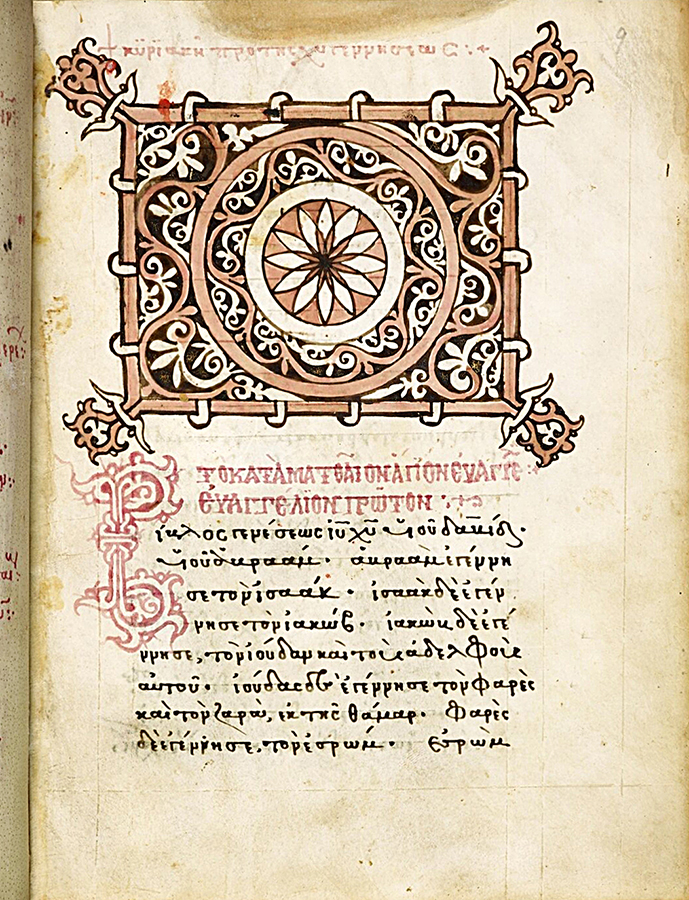
Bible, History, Archaeology
Bible,
History,
Archaeology
The law of retaliation«
«...an eye for an eye, a tooth for a tooth...»
Where does this expression come from and how has it been applied to this principle of the Law (in this case civil, not criminal) promulgated at Sinai and which has become a biblical misnomer throughout history?
 Introduction
Introduction
The origin of the erroneous meaning of the law of retaliation: Hammurabi's code of laws.
talion, from the Latin «tel» or «pareil».
1. Civil or criminal law?
The first signs of the law of retaliation can be found in the Code of Hammurabi, in 1750 BC, in the kingdom of Babylon. This law prevented people from taking the law into their own hands, and introduced the beginnings of social order in the way crimes were dealt with.
Cylindrical stele, 2.25 m high. Erected in Babylon in the temple of Sippar, it was brought back as war booty by the Elamite kings around 1150 BC.
The top of the stele is adorned with a bas-relief depicting the main deities, including Shamash, the sun god seated on a throne, and Hammurabi standing before his god.
Image opposite: the Code of Hammurabi stele. The text of the 28 columns comprising the 282 «articles of law» is engraved in the language of the Semites of Akkad. Height 2.25 m. Image and editing © Théo Truschel.
The code is engraved in cuneiform characters arranged in columns.. The first part of the code is the account of Hammurabi's accession to the throne. The second part of the code, the most important, contains 282 articles of 3,000 lines each setting out an aspect of jurisprudence.
1. Criminal law covers contraventions, délits and crimes. These include: theft, murder, rape, break-ins, violence against others, traffic offences, etc. Civil law covers contracts of all kinds, labor law (Prudhommes), damages, consumer law and family law (divorce, marriage, children, inheritance, etc.).
Sinaitic Law
Sinaitic law «...an eye for an eye, a tooth for a tooth...» appears three times in the Pentateuch:
1 «But if misfortune befalls you, you will pay life for life, eye for eye, tooth for tooth, hand for hand"., ... » (Exodus 21:23-25).
2. «If anyone injures his neighbor, it shall be done to him as he has done: fracture for fracture, eye for eye, tooth for tooth; ...» (Leviticus 24:17-22).
3. «You shall not cast a glance of pity: an eye for an eye, a tooth for a tooth, a hand for a hand, a foot for a foot...» (Deuteronomy 19:21).
A view (detail) of the Dead Sea.
With an approximate surface area of 810 km2, it is fed by the Jordan and Arnon rivers, which flow from the Jordanian plateau. While the average salinity of seawater is 2 to 4 %, that of the Dead Sea is approximately 27.5 % (or 275 grams per liter). This salinity, together with the presence of toxic electrolytes, means that no fish or macroscopic algae can survive, earning it the name «Dead Sea». Image © Doron Nissim.
According to the Torah

I've suffered damage and I'm taking the law into my own hands ...
Visit revenge (or retaliation) is not a biblical principle of justice. By applying it in this way, the problem is not remedied, but perpetuated (vendetta). God's goal was to repair (or compensate) and «start again».

Landscape of Israel
Israel is first and foremost an Asian country, belonging to the geographical part of the Near East that forms part of the wider West Asian region. The country occupies an exceptional position as an intercontinental crossroads, thanks to its central position in West Asia, its proximity to Africa via Egypt, and its regular and sustained relations with Europe thanks to its wide access to the Mediterranean Sea. With its many and varied links to Europe, Israel is a kind of «open door» for the West on the Asian continent. Image © Doron Nissim.
Jesus' words

«You have heard that it was said, «An eye for an eye and a tooth for a tooth». And I tell you not to resist the wicked. On the contrary, if someone slaps you on the right cheek, turn to him the other also. Whoever wants to bring you before the judge to take your tunic, leave your cloak as well...».
Image opposite: an 11th-century leaf from the Gospel of Matthew in Latin, codex Harleianus 5784 Harley 1775, British Library. image © Gerardos.
Note the words Jesus uses to comment on this biblical passage. He does not say« it is written... » as he often said in front of his interlocutors (for example, Jesus in the desert confronting Satan, Matthew 4:10), but here he says, « You've heard it said... » It seems that the correct understanding of this law had already deviated by the time of Jesus of Nazareth.
The tradition of Judaism
According to the Mishna in the Talmud
This rule indicates the need for compensatory equivalence in punishment. The Talmud in the order Nezikin, Baba Kama, argues that the above-mentioned verses from Exodus 21:23-25; Leviticus 24:17-22 and Deuteronomy 19:21 cannot be taken literally, as it is impossible to determine whether, for example, the consequences of one person losing an eye will be equivalent to the consequences of another losing an eye.
The general principle retained by Jewish Law for any physical damage received is the payment of compensation for :
- Nezek, the value of the permanent physical disability measured in terms of lost professional earnings; ;
- Shevet, loss of income while recovering from an injury; ;
- Tzaar, the price of pain; ;
- Ripouy, the cost of medical expenses; ;
- Boshet, the shame inflicted.
The exact value of such compensation must be determined on a case-by-case basis.
Rabbinic Judaism thus retains from the law of «talion» only the idea of just financial compensation, except for capital crimes, in accordance with the principle that human life is priceless and therefore cannot be compensated for financially. (see Genesis 9:6).
Documents sent by Raphaël Draï (1942-2015), Associate Professor of Political Science and Professor at the Faculty of Law and Economics in Nancy and of Political Science at the University of Aix-Marseille III.

Find out more
Raphaël Draï
The myth of the law of retaliation, publisher Hermann, 2017.
«An eye for an eye, a tooth for a tooth». This biblical sentence sums up a conception of justice as being at once ruthless, firm and equitable. It expresses justice through a strict egalitarian calculation, an equation between punishment (the penalty) and harm (the crime committed). Why call this law of retaliation a myth? Because it has been associated with Jewish culture for thousands of years. This is a complete misunderstanding. Hebrew law has consistently rejected the principle of talion and all its modalities.

 Introduction
Introduction